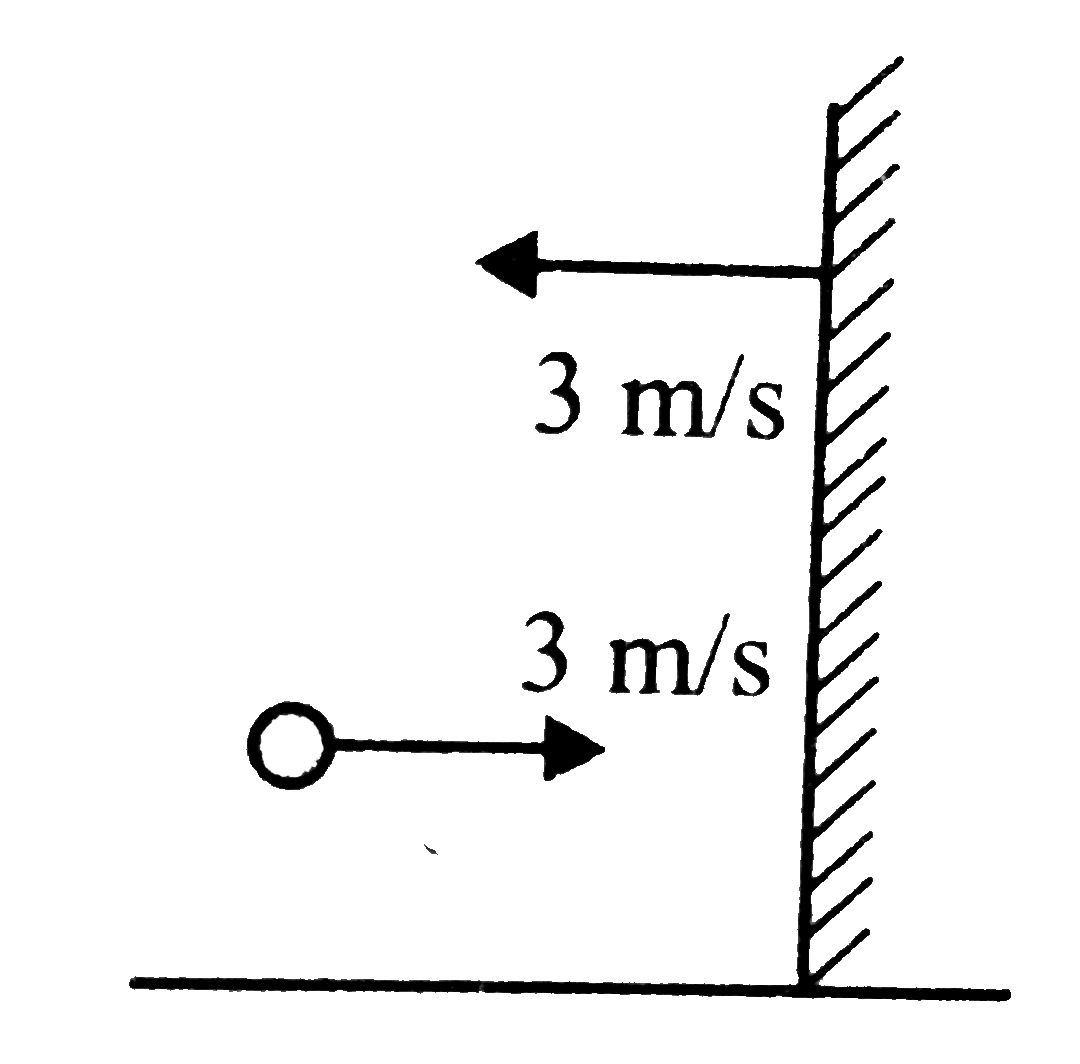A ball of mass 0⋅2 kg moving with a speed of 30 m/s strikes a bat returns in opposite direction with speed of 90m/s . Magnitude of change in momentu,m of ball will be
Zero
6 kg m/s
12 kg m/s
24 kg m/s
The correct Answer is:C
Step by step video, text & image solution for A ball of mass 0*2 kg moving with a speed of 30 m/s strikes a bat returns in opposite direction with speed of 90m/s . Magnitude of change in momentu,m of ball will be by Physics experts to help you in doubts & scoring excellent marks in Class 12 exams.
Updated on:21/07/2023Topper's Solved these Questions
- LAWS OF MOTIONBook:AAKASH INSTITUTEChapter:LAWS OF MOTIONExercise:ASSIGNMENT ( SECTION -B) objective type questions (one option is correct)
Explore 33 Videos
- LAWS OF MOTIONBook:AAKASH INSTITUTEChapter:LAWS OF MOTIONExercise:ASSIGNMENT ( SECTION -C) objective type questions (More than one options are correct)
Explore 7 Videos
- LAWS OF MOTIONBook:AAKASH INSTITUTEChapter:LAWS OF MOTIONExercise:TRY YOURSELF
Explore 67 Videos
- KINETIC THEORYBook:AAKASH INSTITUTEChapter:KINETIC THEORYExercise:EXERCISE (ASSIGNMENT) SECTION - D Assertion - Reason Type Questions
Explore 10 Videos
- MAGNETISM AND MATTER Book:AAKASH INSTITUTEChapter:MAGNETISM AND MATTER Exercise:ASSIGNMENT (SECTION D)
Explore 26 Videos
Similar Questions
A ball of mass 0.5kg moving with a speed of 10m/s rebounds after striking normally a perfectly elastic wall. Find the change in momentum of the ball . If contact time with the wall is 0.1s, what force is exerted by wall?
View SolutionA ball of 0.5 kg mass moving with a speed of 10m/s rebounds after strinking normally a perfectly elastic wall . Find the change in momentum of the ball.
View Solution
Knowledge Check
A ball of weight 0.1 kg coming with speed 30 m / s strikes with a bat and returns in opposite direction with speed 40 m / s , then the impulse is (Taking final velocity as positive)
A−0.1×(40)−0.1×(30)B0.1×(40)−0.1×(−30)C0.1×(40)+0.1×(−30)D0.1×(40)−0.1×(20)A ball of weight 0.1 kg coming with speed 30 m / s strikes with a bat and returns in opposite direction with speed 40 m / s , then the impulse is (Taking final velocity as positive)
A−0.1×(40)−0.1×(30)B0.1×(40)−0.1×(−30)C0.1×(40)×0.1(−30)D0.1×(40)−0.1×(20)A ball of mass 3kg moving with a speed of 100 m/s, strikes a wall at an angle 60∘ (as shown in figure). The ball rebounds at the same speed and remains in contact with the wall for 0.2 s, the force exerted by the ball on the wall is
 A1500√3NB1500NC300√3ND300N
A1500√3NB1500NC300√3ND300N
A ball of mass m moving with speed v towards the right strikes a wall moving towards the left with speed u. Find the change in the K.E. of the ball if the collision is elastic.
View SolutionA ball of mass 2kg moving with speed 5m/s collides directly with another ball of mass 3kg moving in the same direction with speed 4m/s. The coefficient os restitution is 2/3. Find the velocities of both ball after the collision.
View SolutionA ball of mass 2kg moving with speed 4m/s hits a wall normally moving with speed 2m/s in opposite direction. Coefficient of restitution between wall & ball is e=12 .If ball remains in contact with wall till wall has moved 3m then average force (in N ) on ball by wall is?
View SolutionThe following problems illustrate the effect of a time-dependent force of a large average magnitude which acts on a moving object only for a short duration. Such forces are called 'impulsive' forces. According to the impulse-momentum theorem, impulse delivered to a body is equal to the change of linear momentum of the body.
A ball of mass 250g is thrown with a speed of 30m/s. The ball strikes a bat and it is hit straight back along the same line at a speed of 50m/s. Variation of the interaction force, as long as the ball remains in contact with the bat, is as shown in Fig.

Maximum force exerted by the bat on the ball is
View SolutionA highly elastic ball moving at a speed of 3m/s approaches a wall moving towards it with a speed of 3m/s. After the collision. the speed of the ball will be

View Solution

